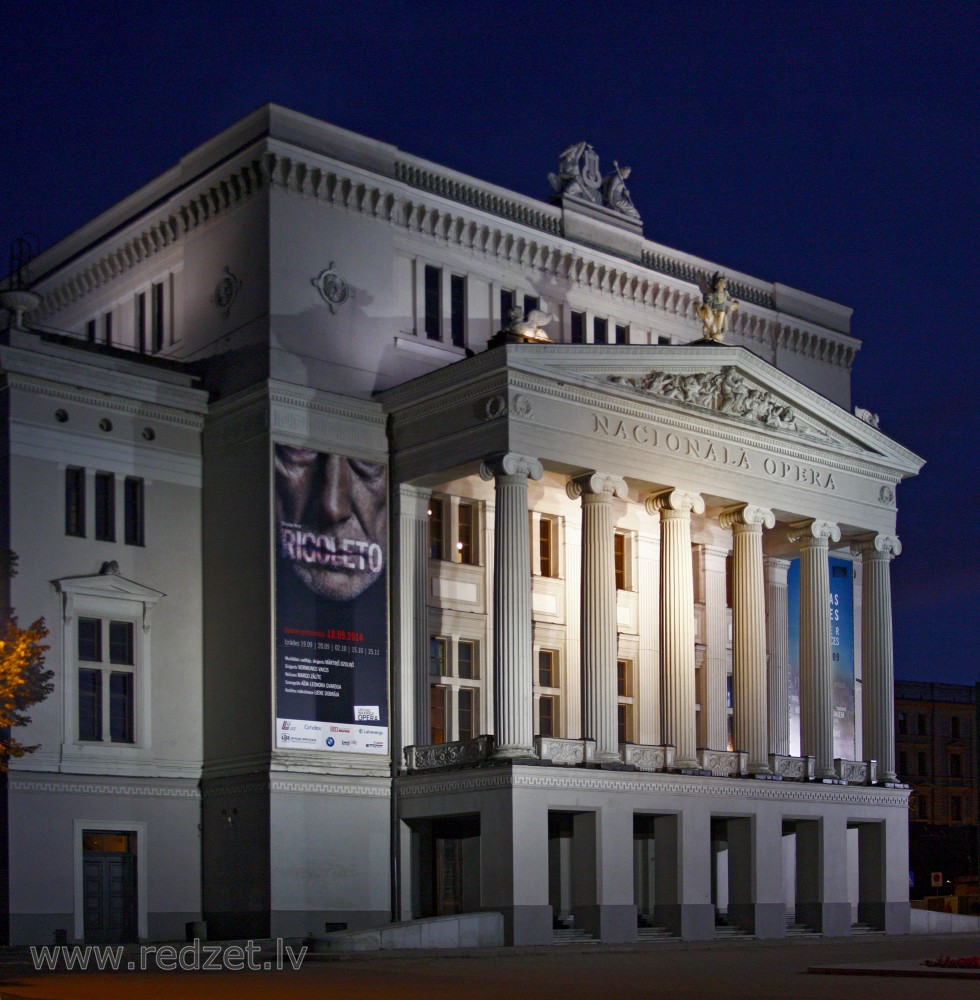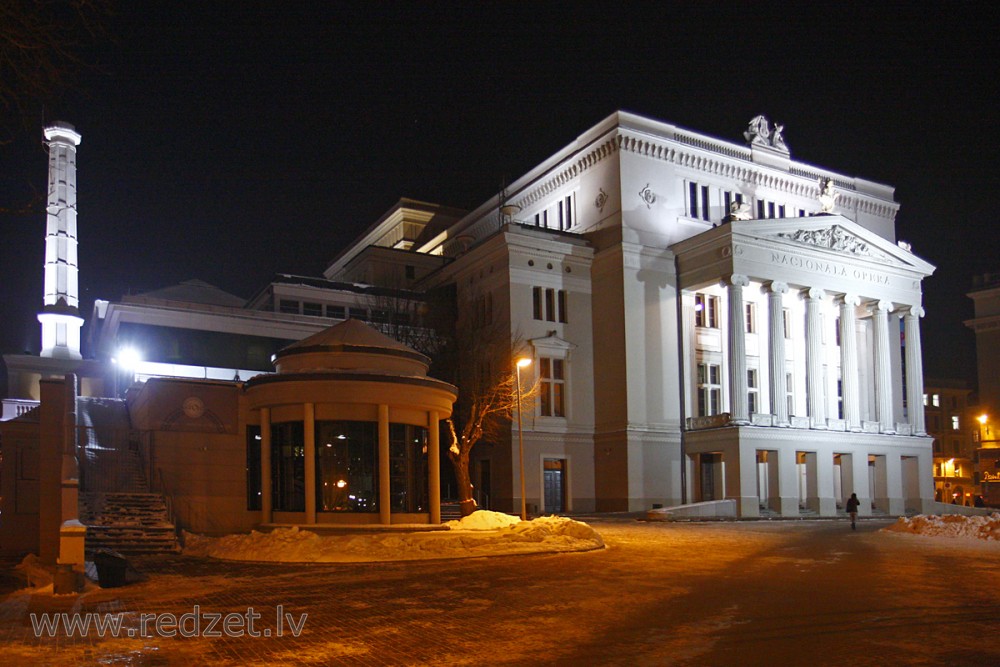Latvian National Opera
The Latvian National Opera (LNO, Latvijas Nacionālā opera), Riga, is the national opera of Latvia. The opera company includes the Latvian National Ballet (LNB), LNO Chorus, and LNO Orchestra.
History
Riga already had a German-speaking theatre, which also offered opera and ballet, from 1782, and this was housed in the Riga City Theatre from 1863.
The first attempt to create a Latvian national opera was 1893, when Jēkabs Ozols' Spoku stunda ("The Ghostly Hour") was performed. The Latvian opera (Latviešu Opera) was founded in 1912 by Pāvuls Jurjāns, though almost immediately, during the First World War, the opera troupe was evacuated to Russia. In 1918, the opera restarted (Latvju Opera) led by Jāzeps Vītols, the founder of the Latvian Academy of Music. The debut performance, on January 23, 1919, was of Wagner’s Der fliegende Holländer. From 1944, following the occupation of Latvia by Soviet Union, and incorporation into the Soviet Union, the Latvian National Opera became the Latvian S.S.R. State Opera and Ballet Theater. In 1990, the theater was renamed the Latvian National Opera, but almost immediately the building was closed till 1995 for renovation and the company moved to temporary premises. For the reopening in 1995, the first opera was Jānis Mediņš’ Uguns un nakts (Fire and Night).
Building
The National Opera House was constructed in 1863 by the St. Petersburg architect Ludwig Bohnstedt (interiors made by the firm of August Volz), for the then German-speaking City Theatre, and has been refurbished several times; 1882–1887 (following a fire in 1882), 1957–1958, 1991–1995 (following independence). A modern annex was added in 2001 with a 300-seat New Hall.
en.wikipedia.org
When architects Otto Dietze and Johann Daniel Felsko redesigned the centre of Riga in 1856, they chose one of the most exposed and significant spots in town for the new theatre: it was to be erected near the city's canal, on the grounds of the former bastion of the city's fortifications. In 1860, the design by architect Ludwig Bohnstedt was deemed the best of all for Riga's new theatre. The building was opened in 1863. The great fire of 1882 destroyed the major part of the building. Riga's chief architect Reinholds Schmaeling was in charge of the reconstruction Project which strictly followed Bohnstedt's original design. The reconstruction, along with several improvements, was completed in 1887.
Several small-scale renovations of the interior, new lighting equipment for the stage, and a ventilation system were executed in 1957 and 1958. By the mid-1970s, however, the necessity for a complete renovation became apparent. The 19th century building did not meet the demands for more space and for technical improvement of the stage. Several years were spent on searching for the most appropriate design for the whole complex including a new annex for offices and rehearsal space.
The creative force behind the Project was architect Imants Jākobsons whose work later was continued by architect Juris Gertmanis. The reconstruction and restoration – which included the front of the house with the auditorium, the foyers, coat rooms, and the staircases – and the refurbishment of the stage began in 1990 and lasted five years during which the house was closed. The number of seats was reduced from 1200 to 933. The LNO re-opened in 1995.
In 2001, the new annex was completed. Using elements of contemporary architecture, it at the same time evokes the style of the late 19th century and blends perfectly with the original building. Aside from offices and rehearsal stages, the annex also provides additional performance space: The New Hall with 300 seats is an ideal venue for chamber operas, small-scale concerts or lectures.
www.opera.lv









